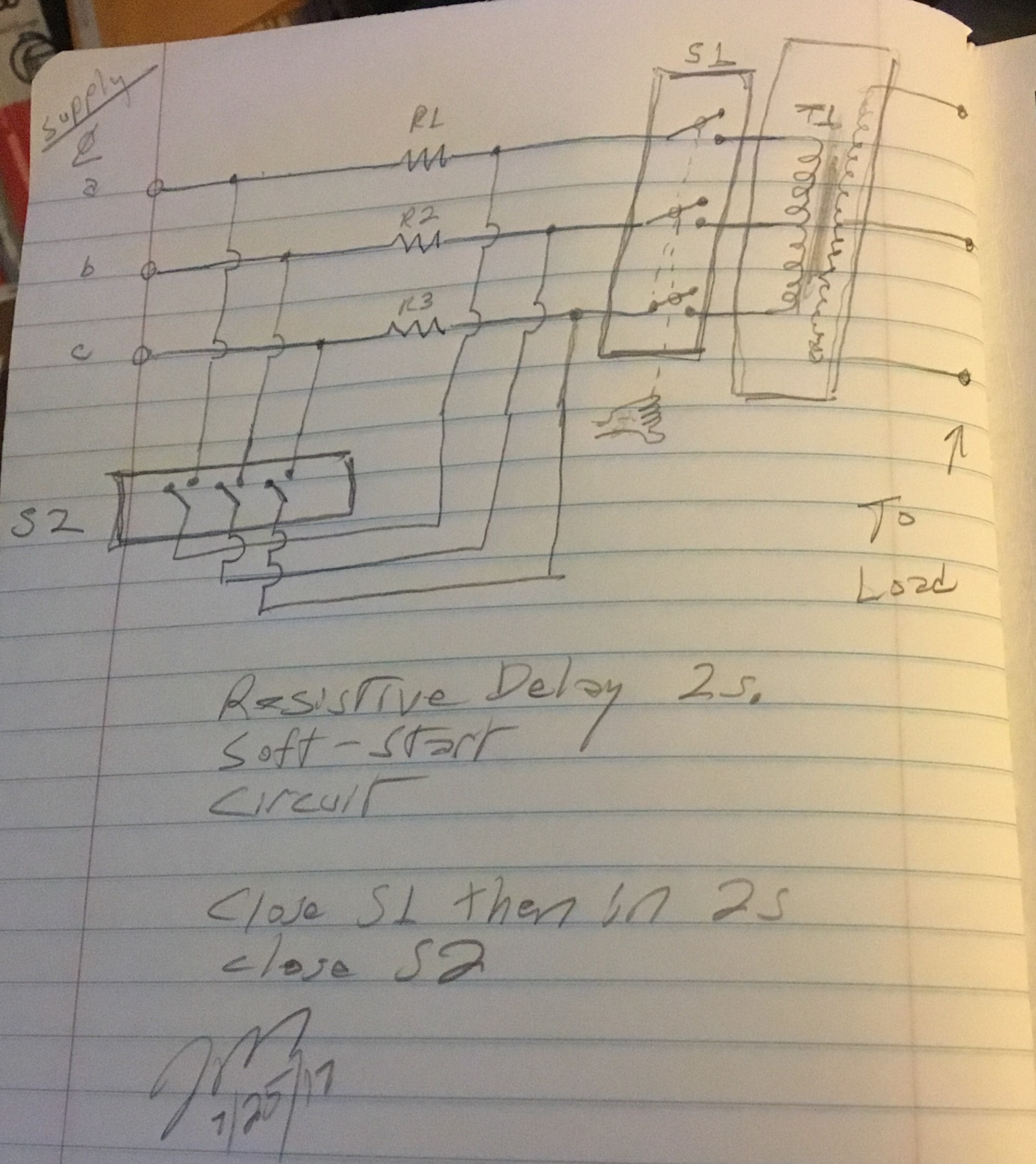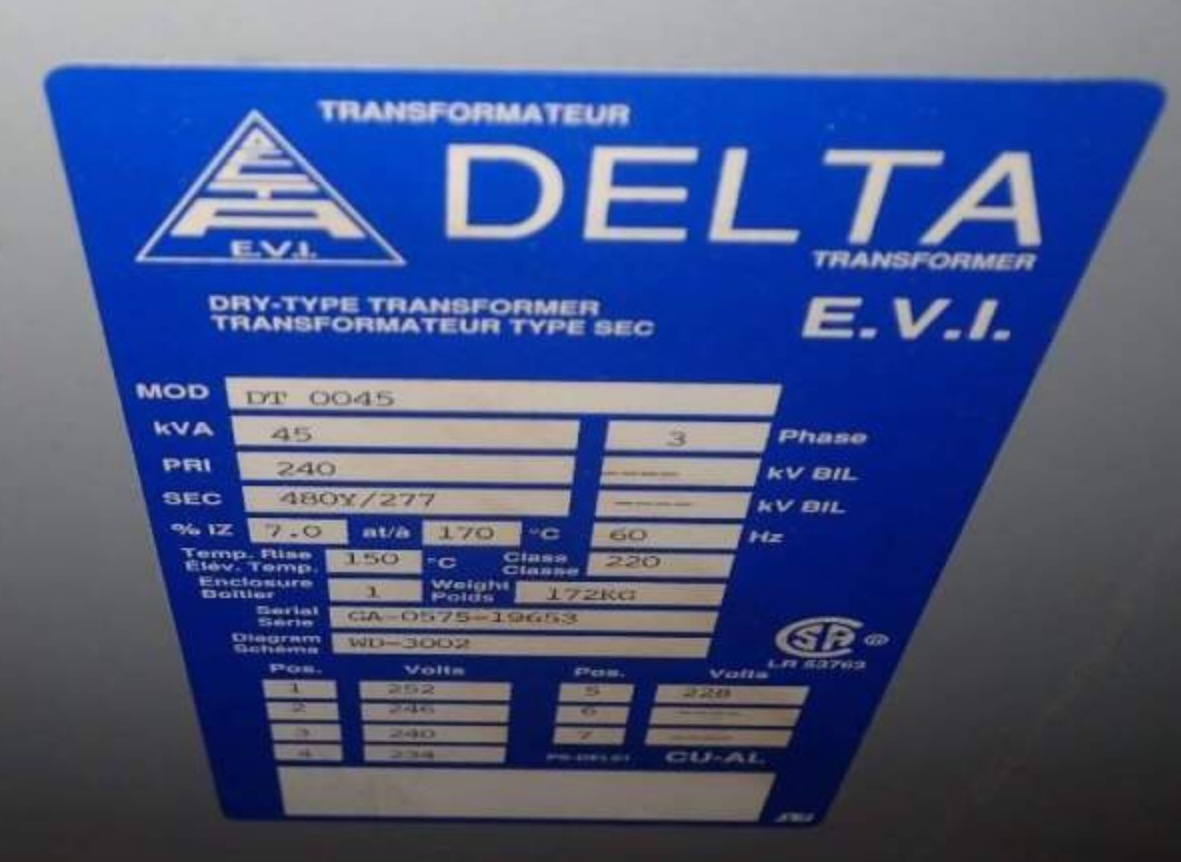277/480 Y Output versus 480V Corner Grounded Delta Output for Machine Loads
Cannonmn,
Your cause might be better served if you put together a list of equipment specs that you plan to run on 480V.
From your
original thread, you mentioned a 2HP pedestal grinder, and a battery charger.
Its most likely that the battery charger can be reconnected for operation at 208V, by changing some jumpers inside the unit. Check the nameplate for compatibility. Instruction for the jumpers should be inside the cabinet.
If that is correct, that leaves you with a
2HP grinder, that we know of.
The grinder may also be re-connectable for 230/460V operation. You never showed us the motor wiring connections, so that we could be sure. If there are 9 or 6 wires coming from the motor, its likely connectable for 230V operation. The motor connected for 230V and operated from 208V will work fine, as long as you upgrade the motor starter and heaters for the increased current at the lower voltage. If you really wanted to be picky, a couple of small buck boost transformers could be used to boost the voltage from 208 to 240. Really not necessary on a single grinder motor though.
Then you told us that the sparky you have is hesitant to use a standard 30KVA 480/208-120V 3Φ transformer in reverse, and corner ground the 480V delta output. So you switched gears and went for a huge
225KVA transformer that had a 277/480V Y output, so it would be a standard Y output and normal bonding and grounding. This lead to the fact that you can't reliably energize that monster on a 208V 100A supply circuit.
For machine tools with standard motors and electro-mechanical controls, corner grounding is no problem when implemented correctly. What can be a problem is equipment that uses electronic drives. VFD's normally want to see a Y input, or damage can occur.
At this point I'm not convinced that you even need 277/480V Y, to power the equipment you have. And if you do, we have no idea what current capacity you require. I did some looking and found one other step up transformer with a
208Pri and a 277/480V Sec in a 15KVA size from New York, if your up for a drive. The 15KVA would be good for an 18A output @ 480V
If it were me, I would step back and assess your actual needs, before you buy any more gear that is really not required. Do the homework first. Check the equipment you have, to see if it's convertible for the voltage you have. Simple is good.
SAF Ω




